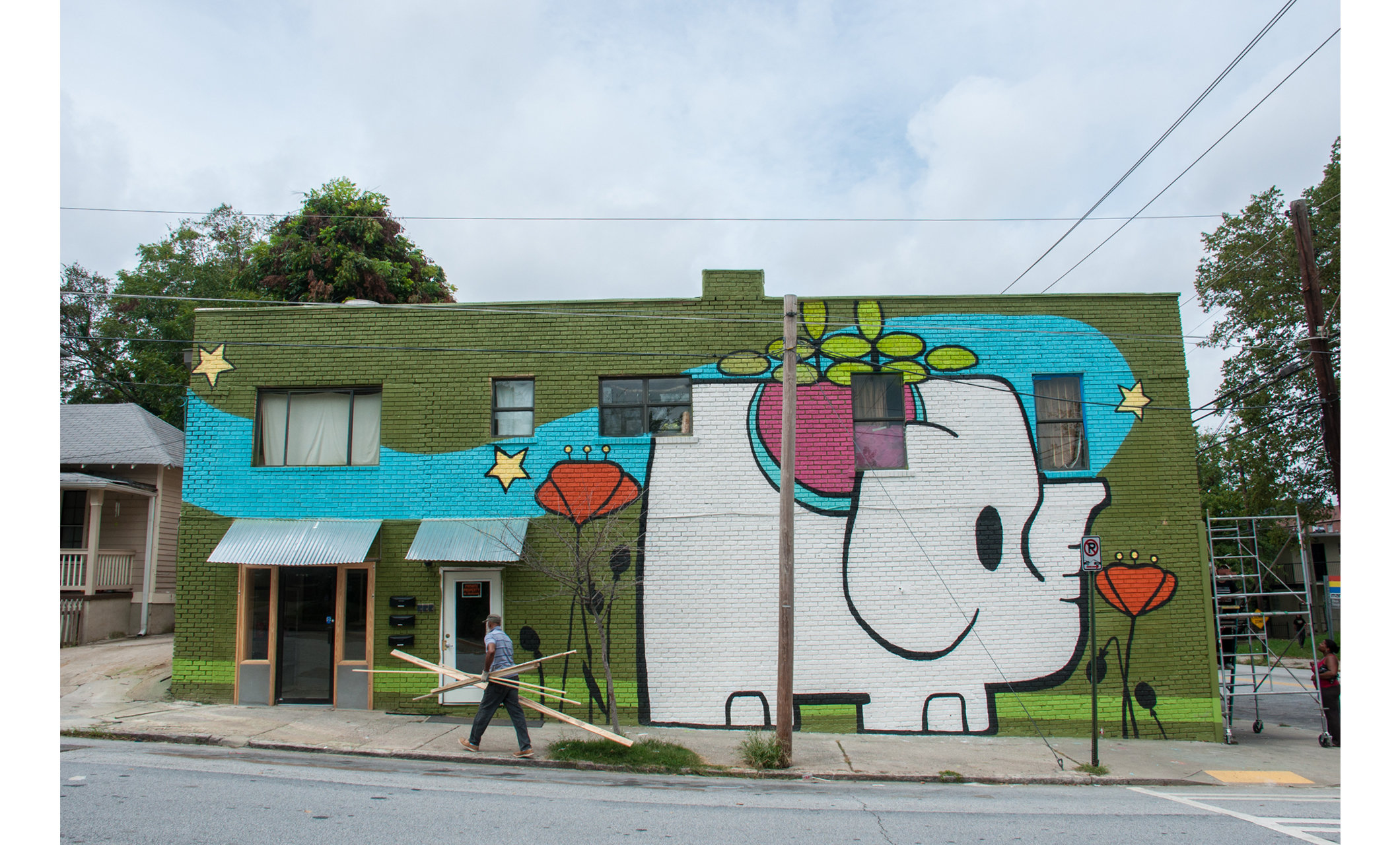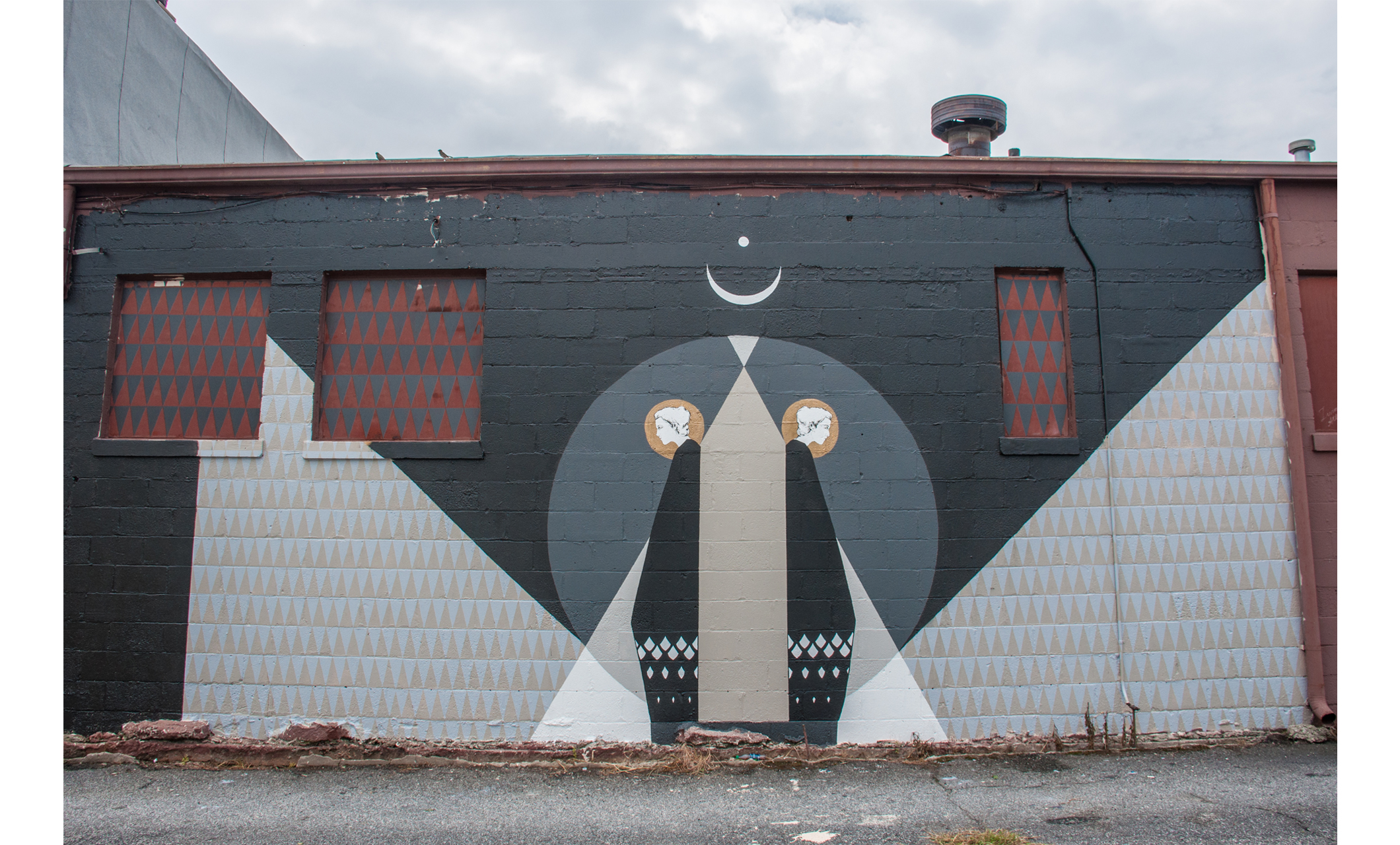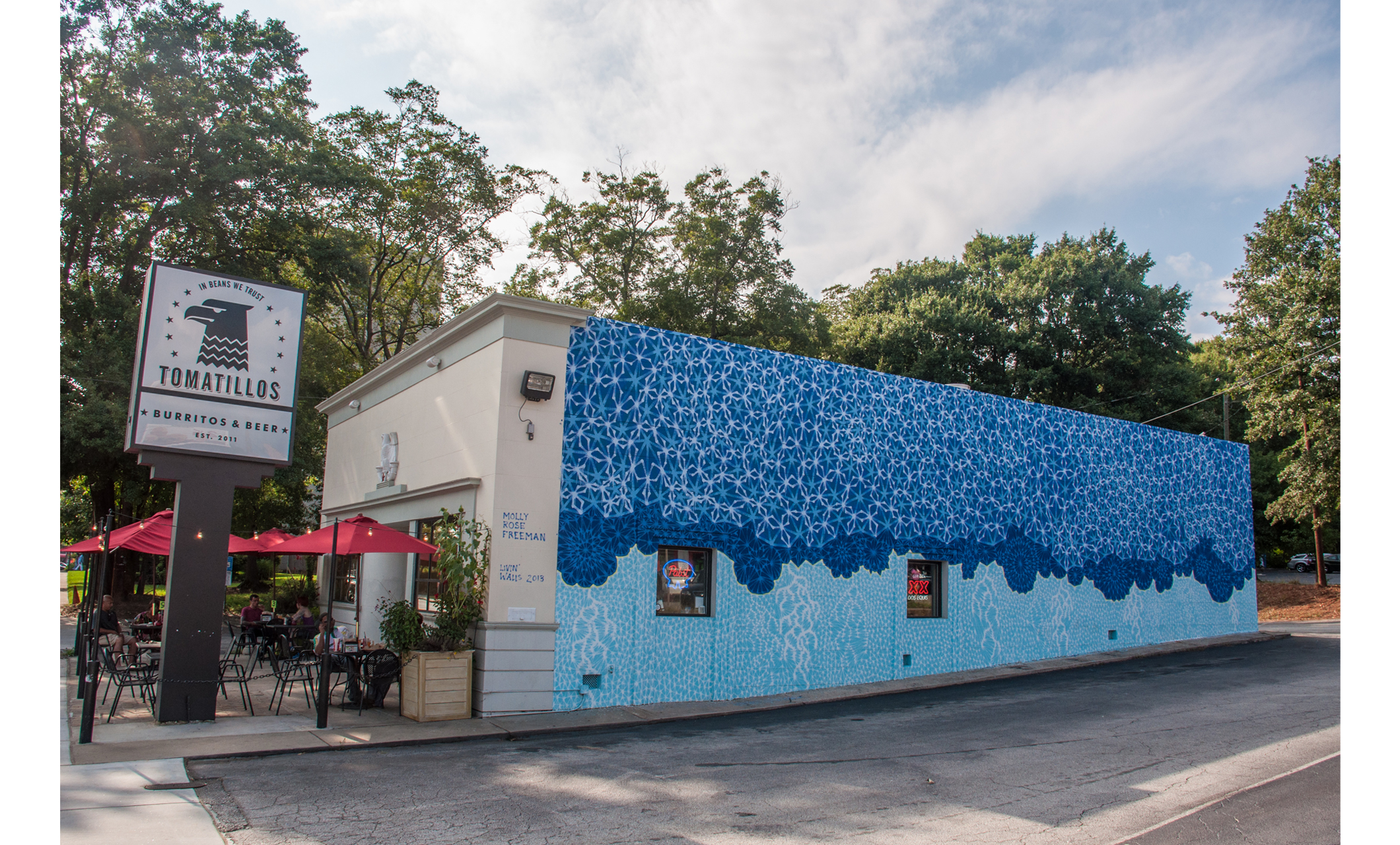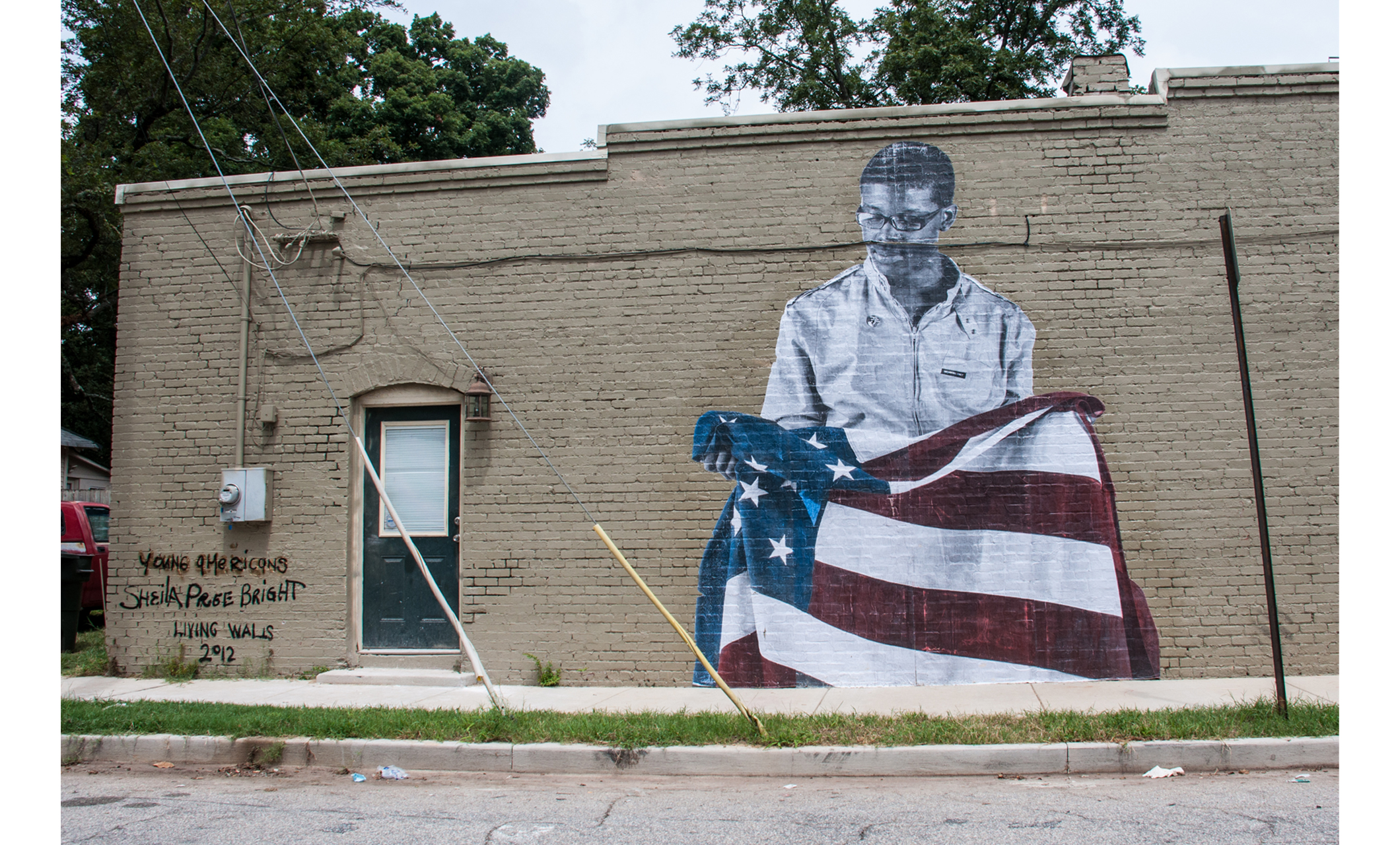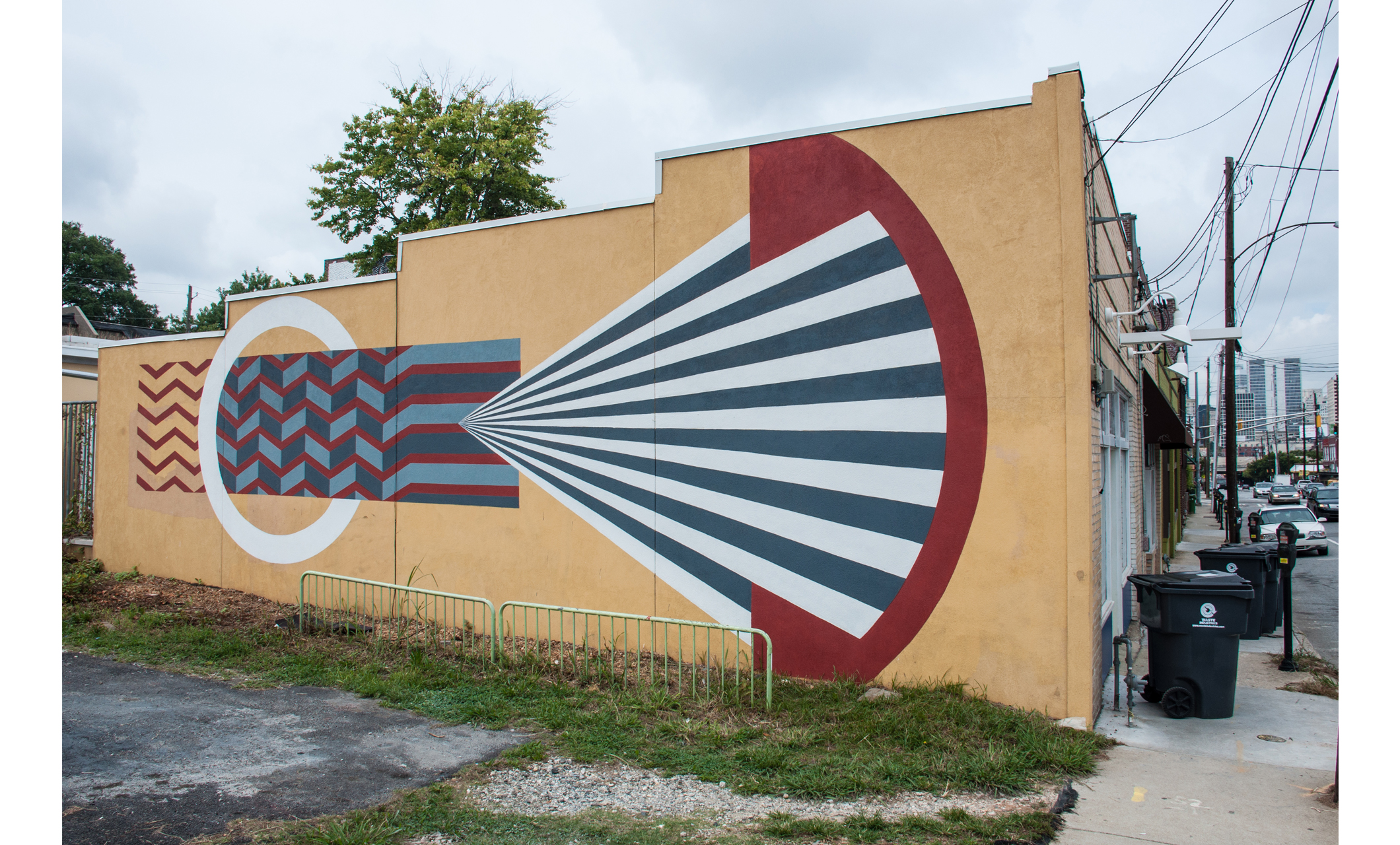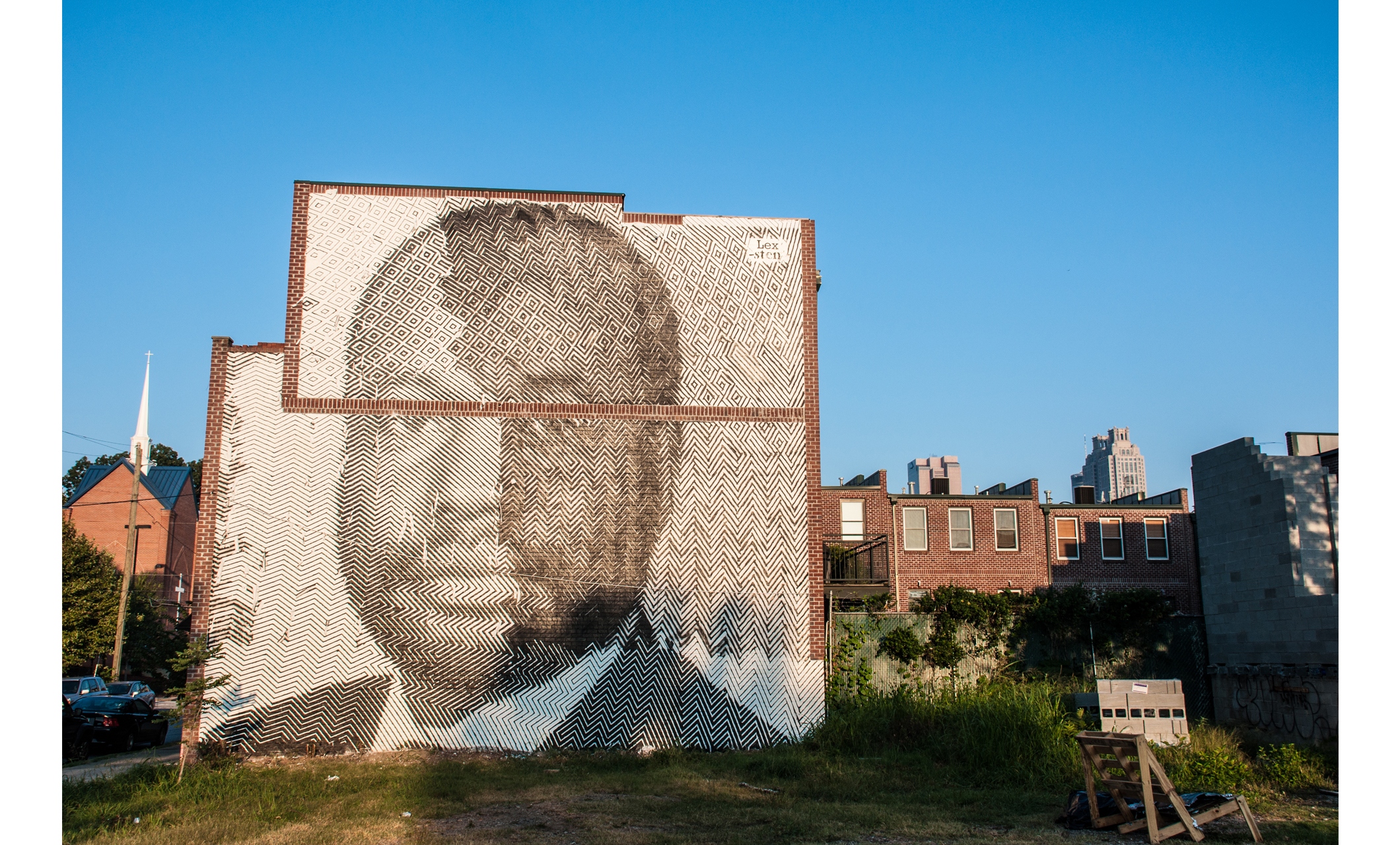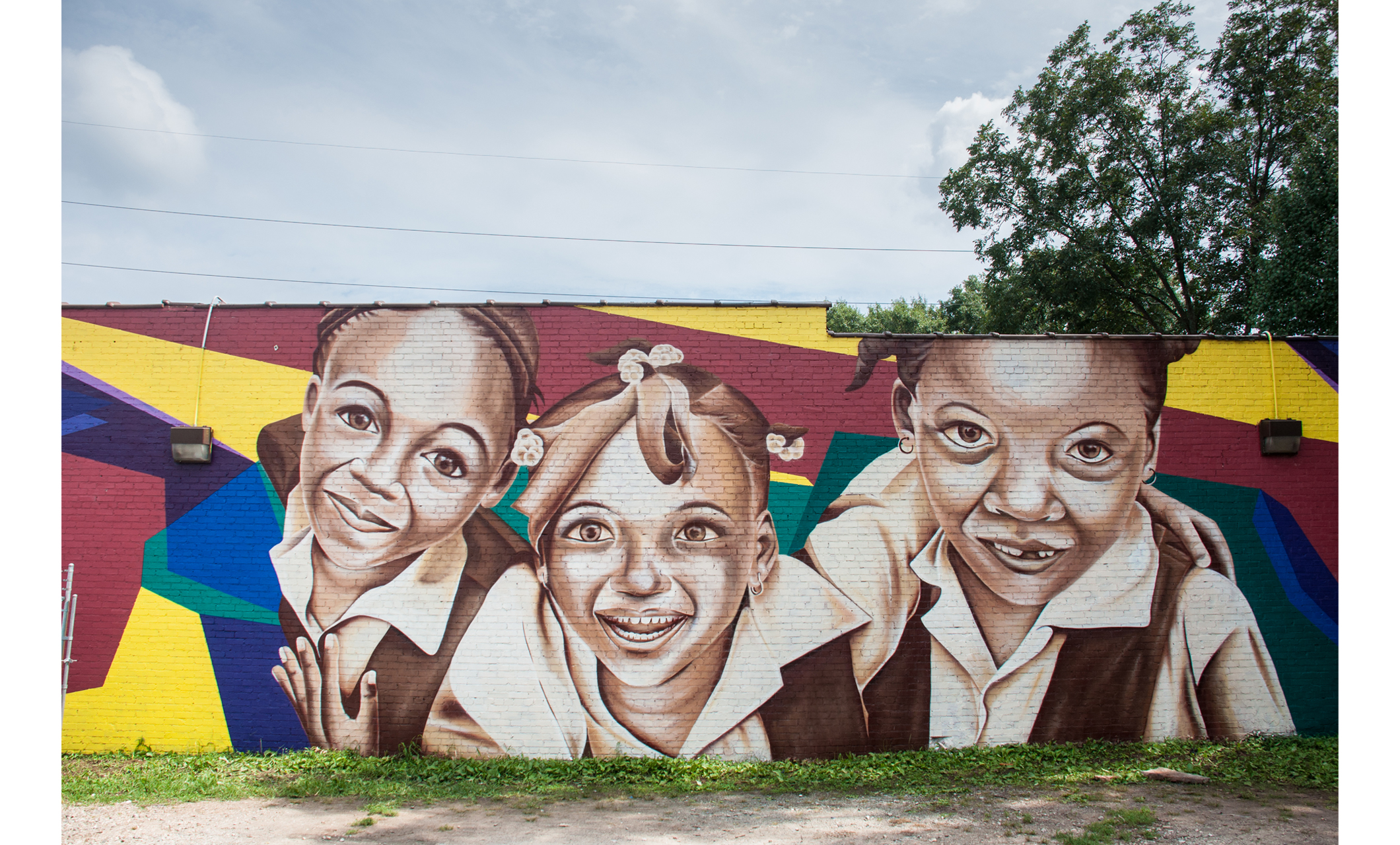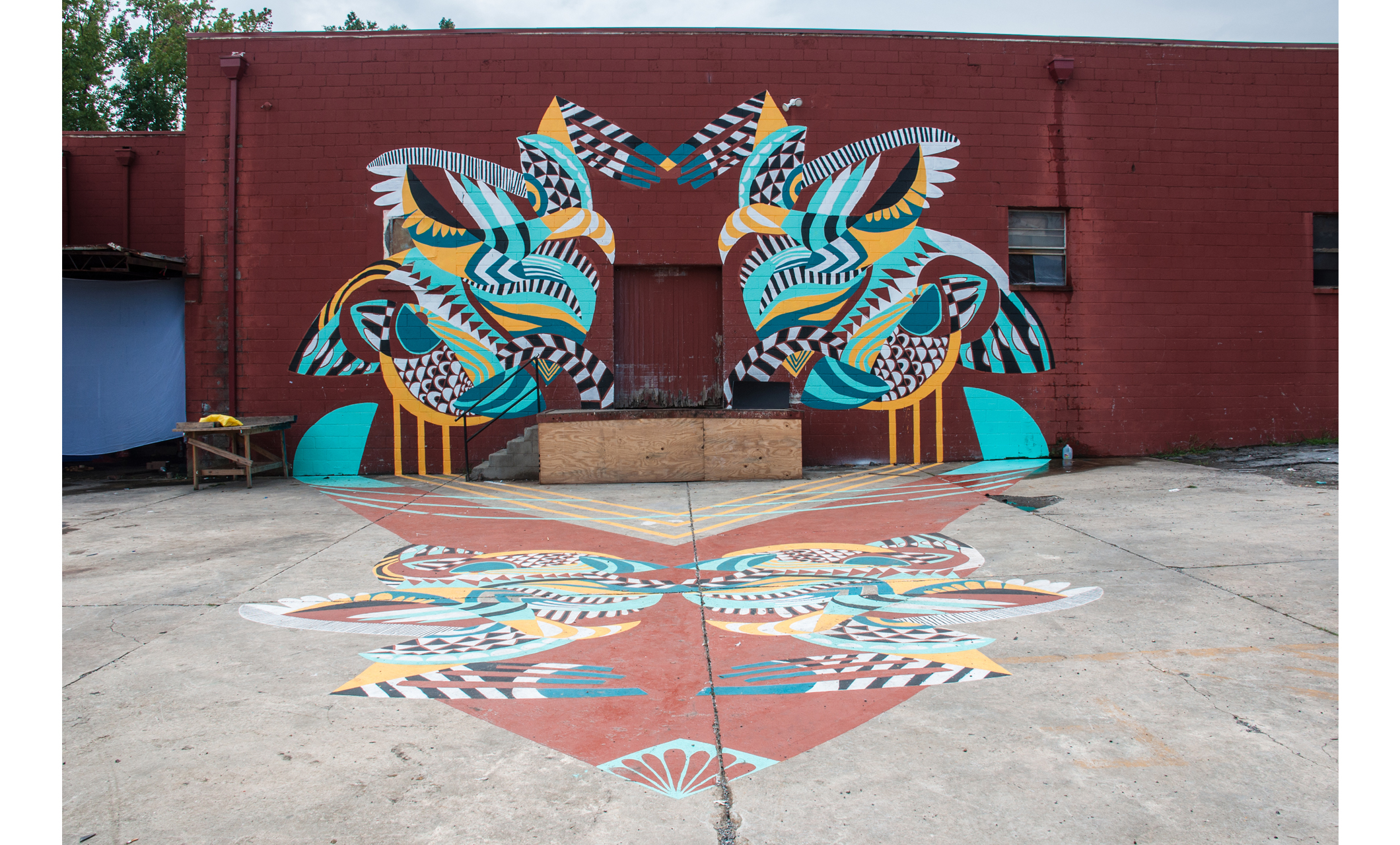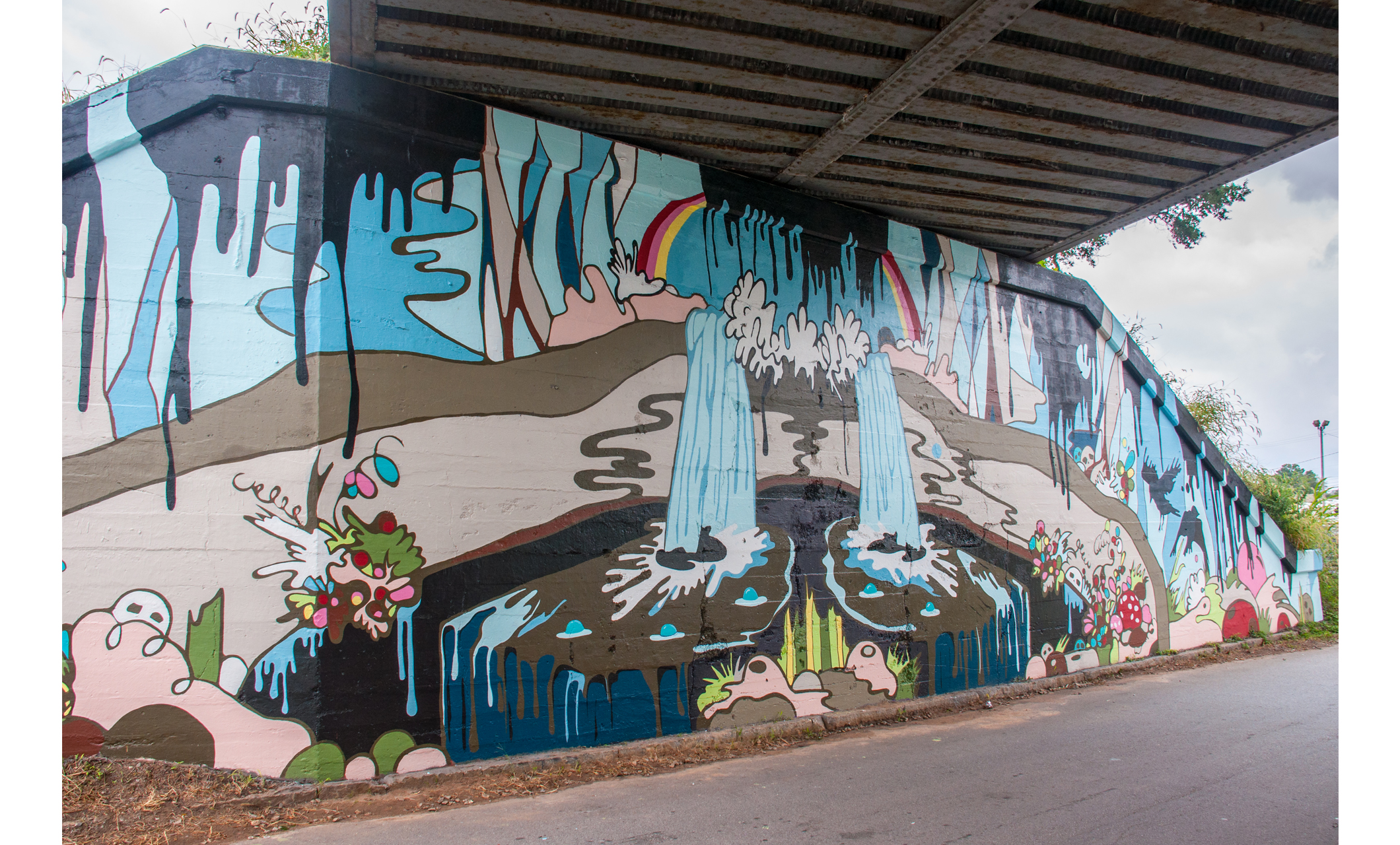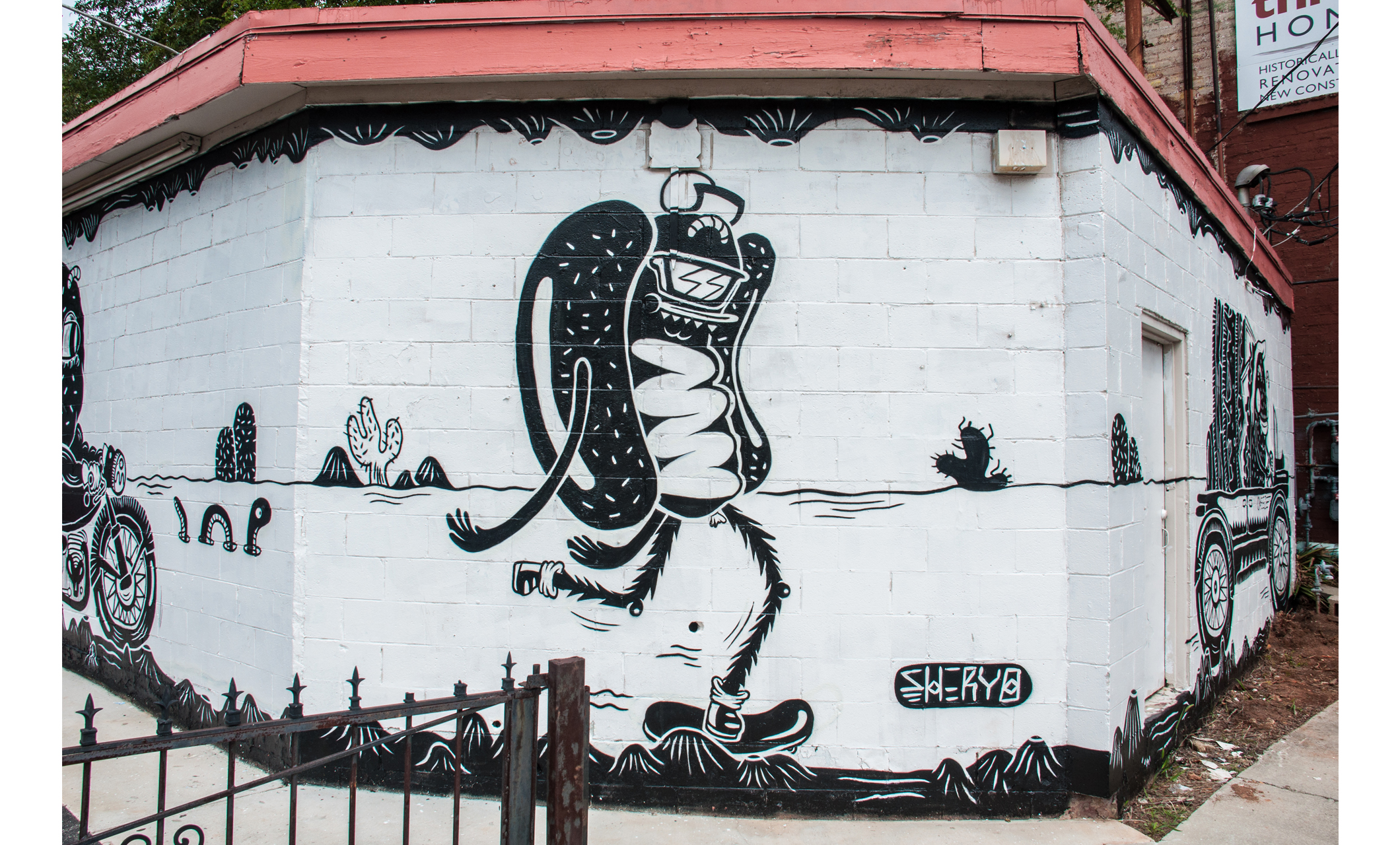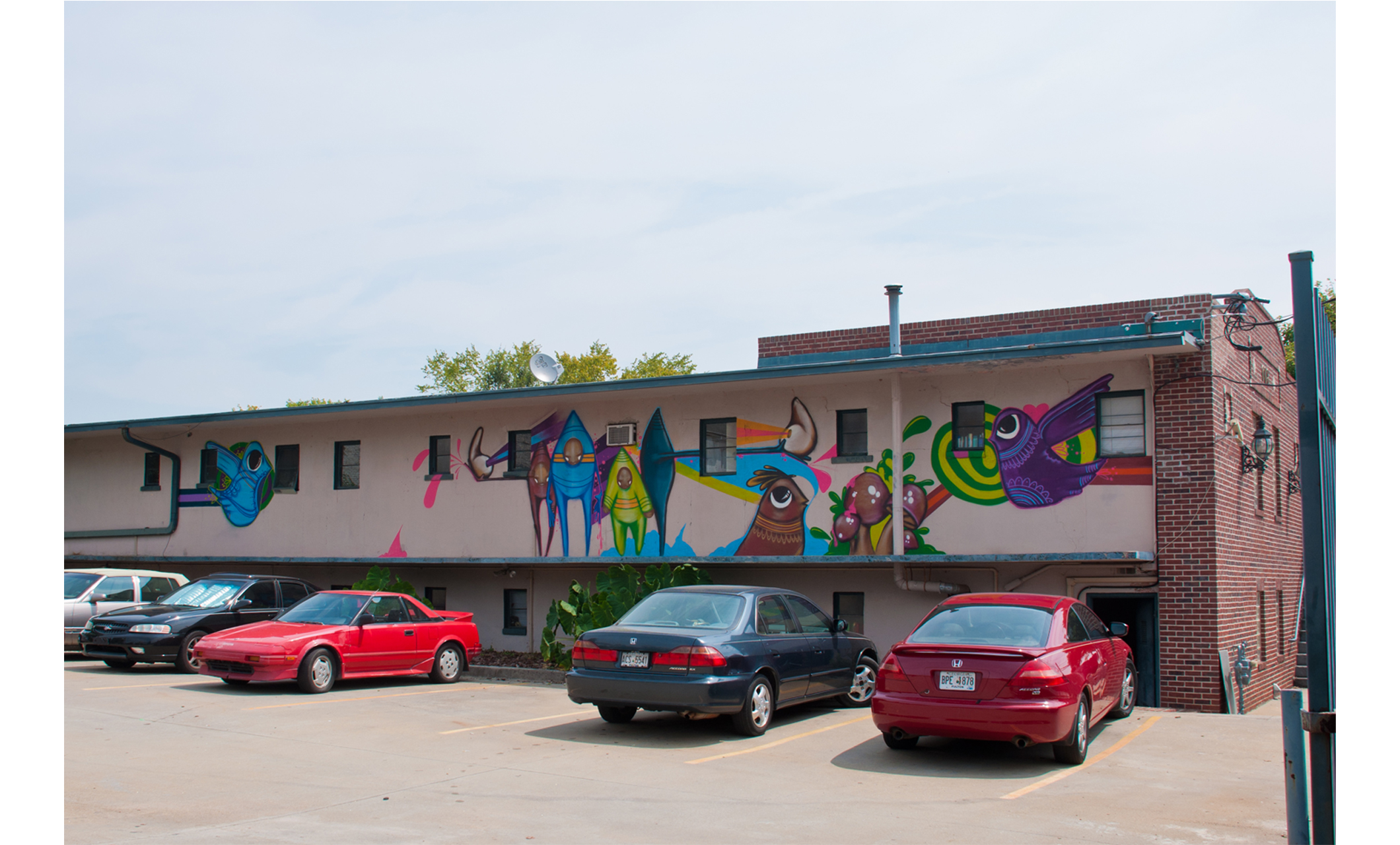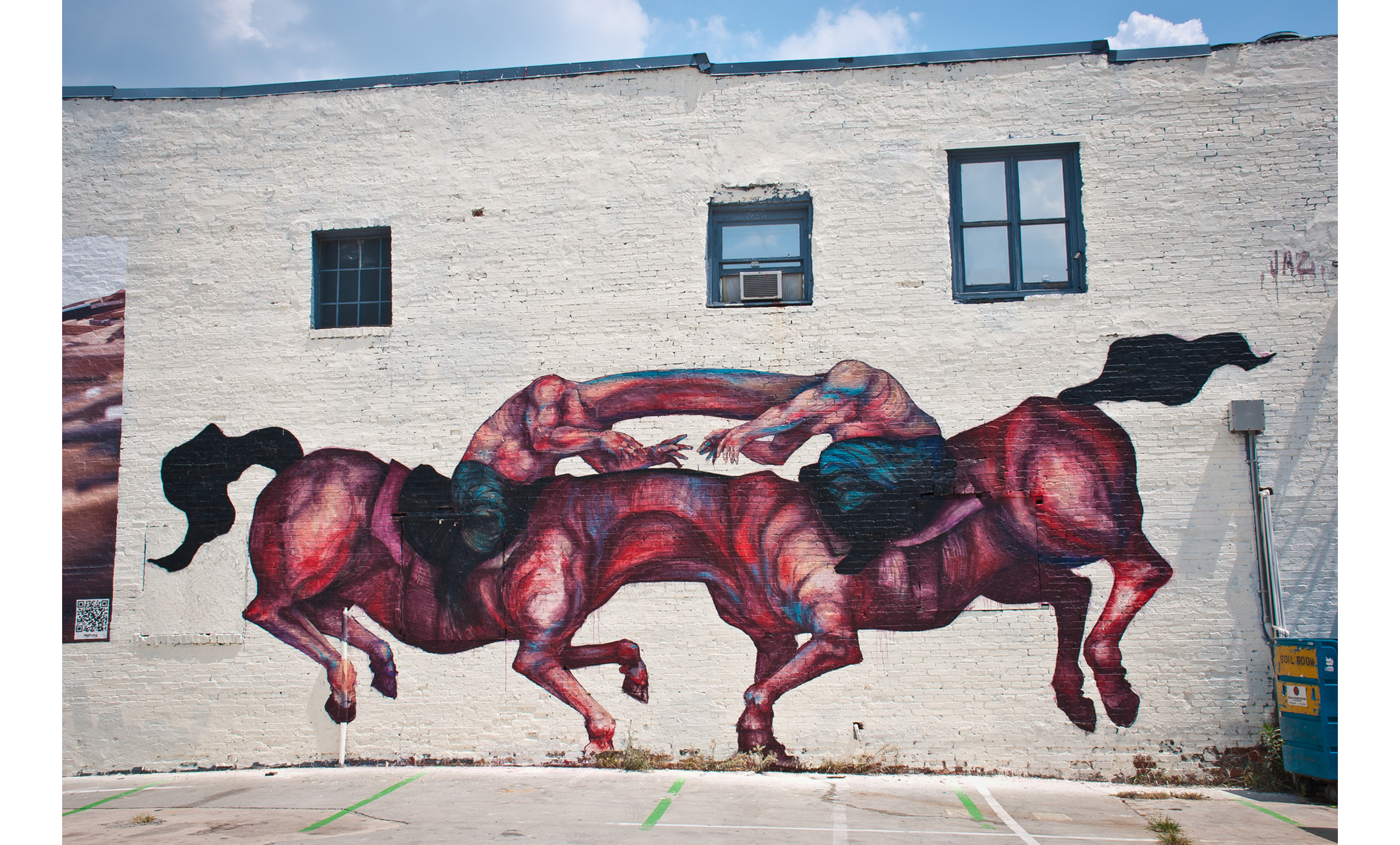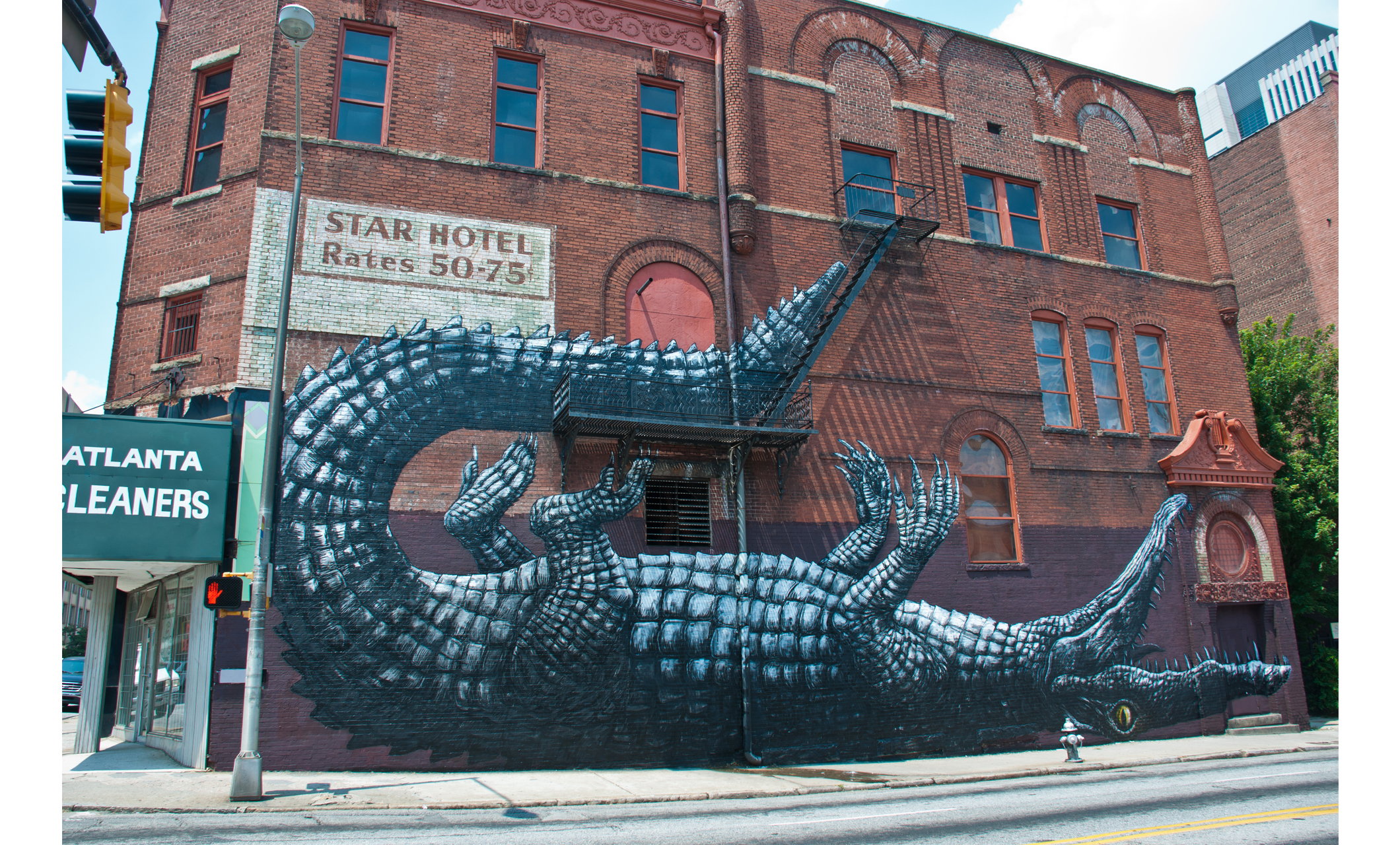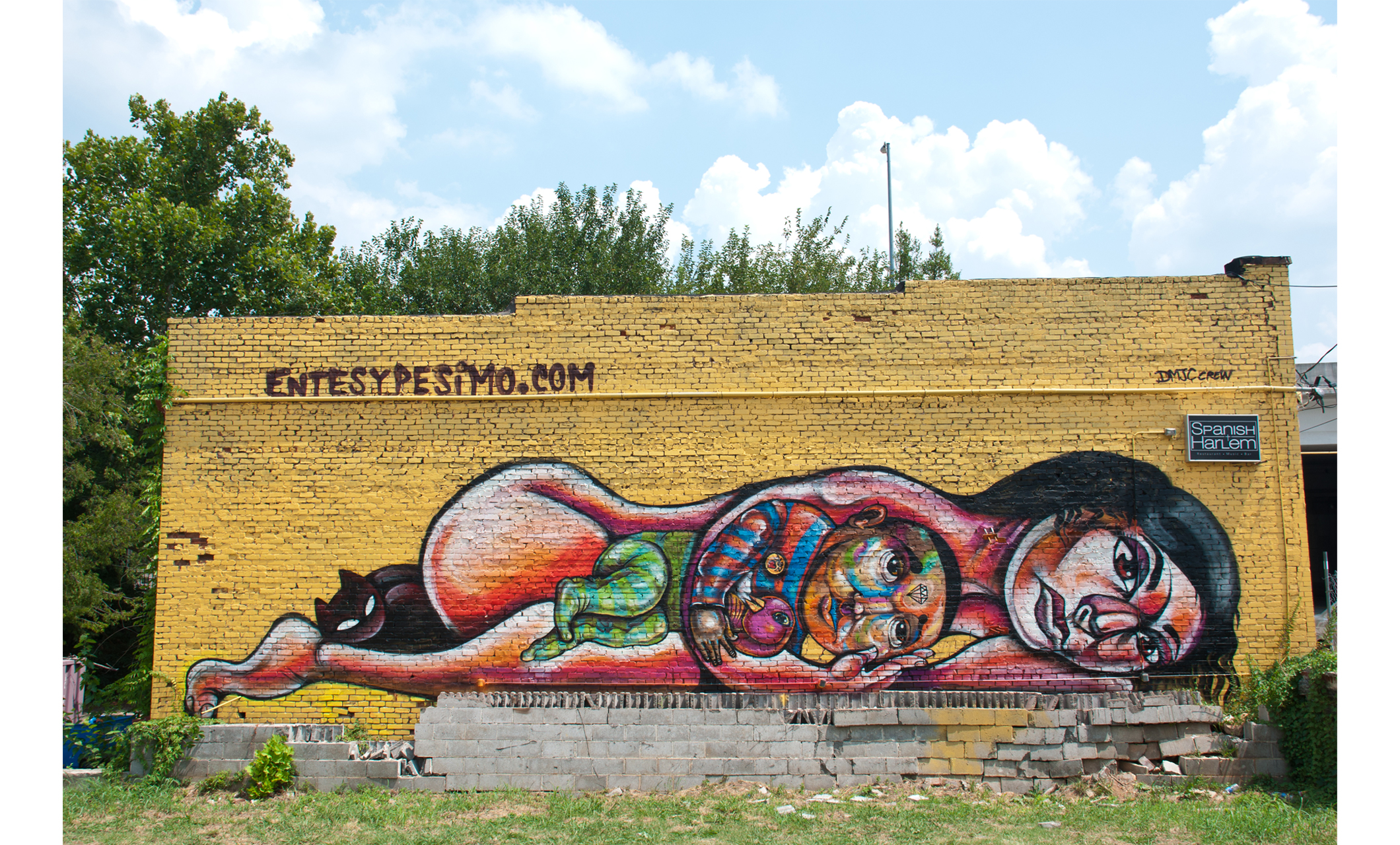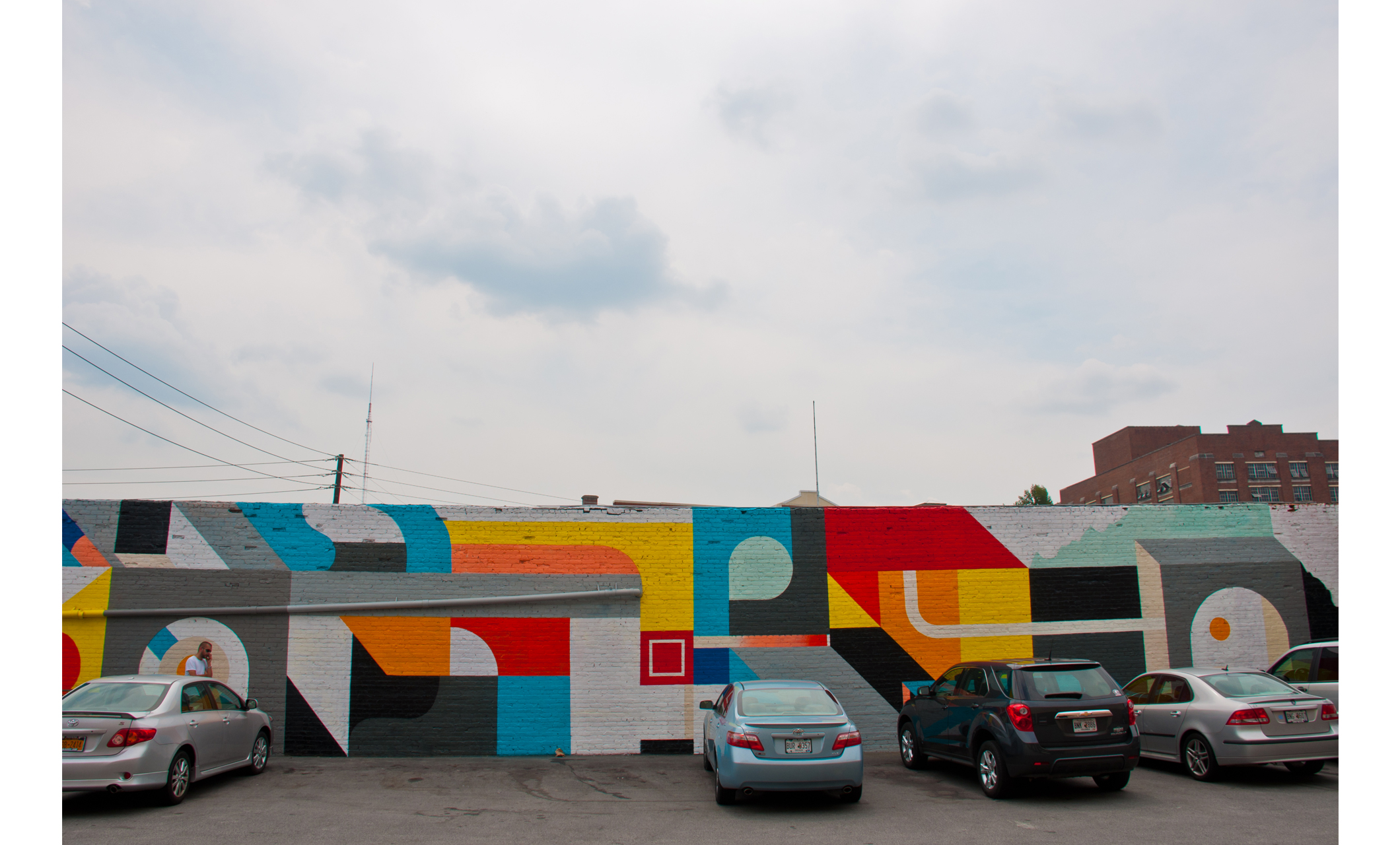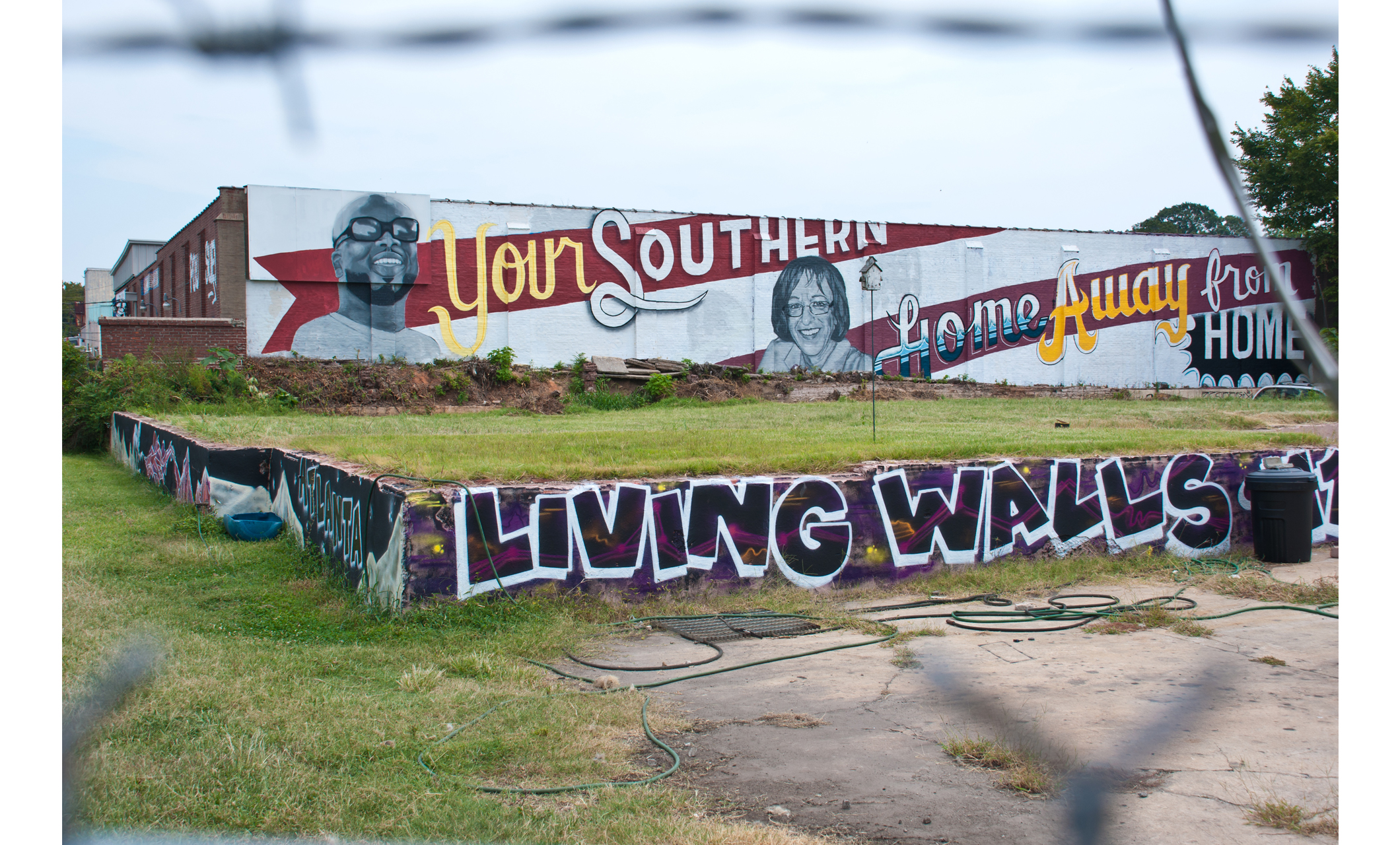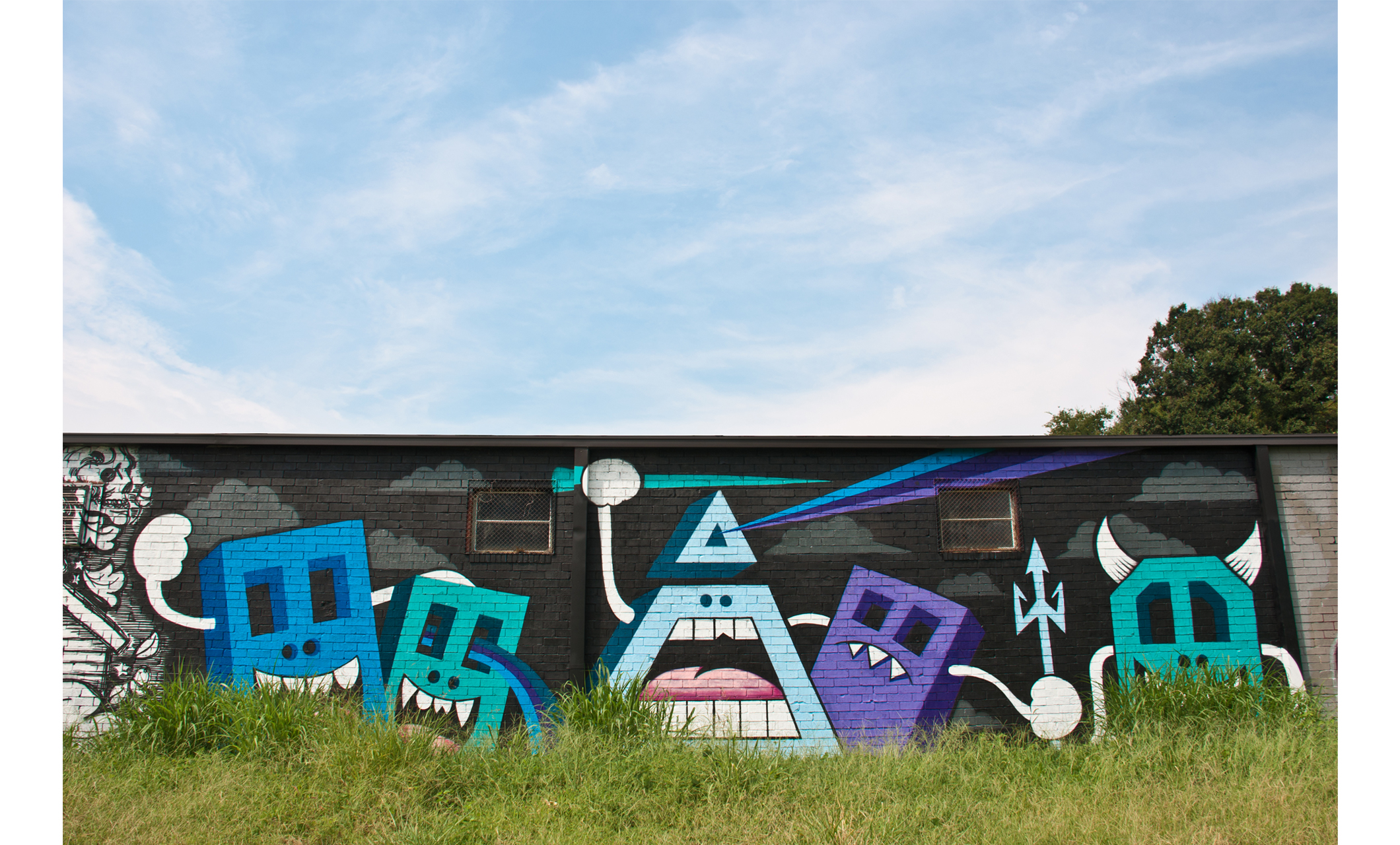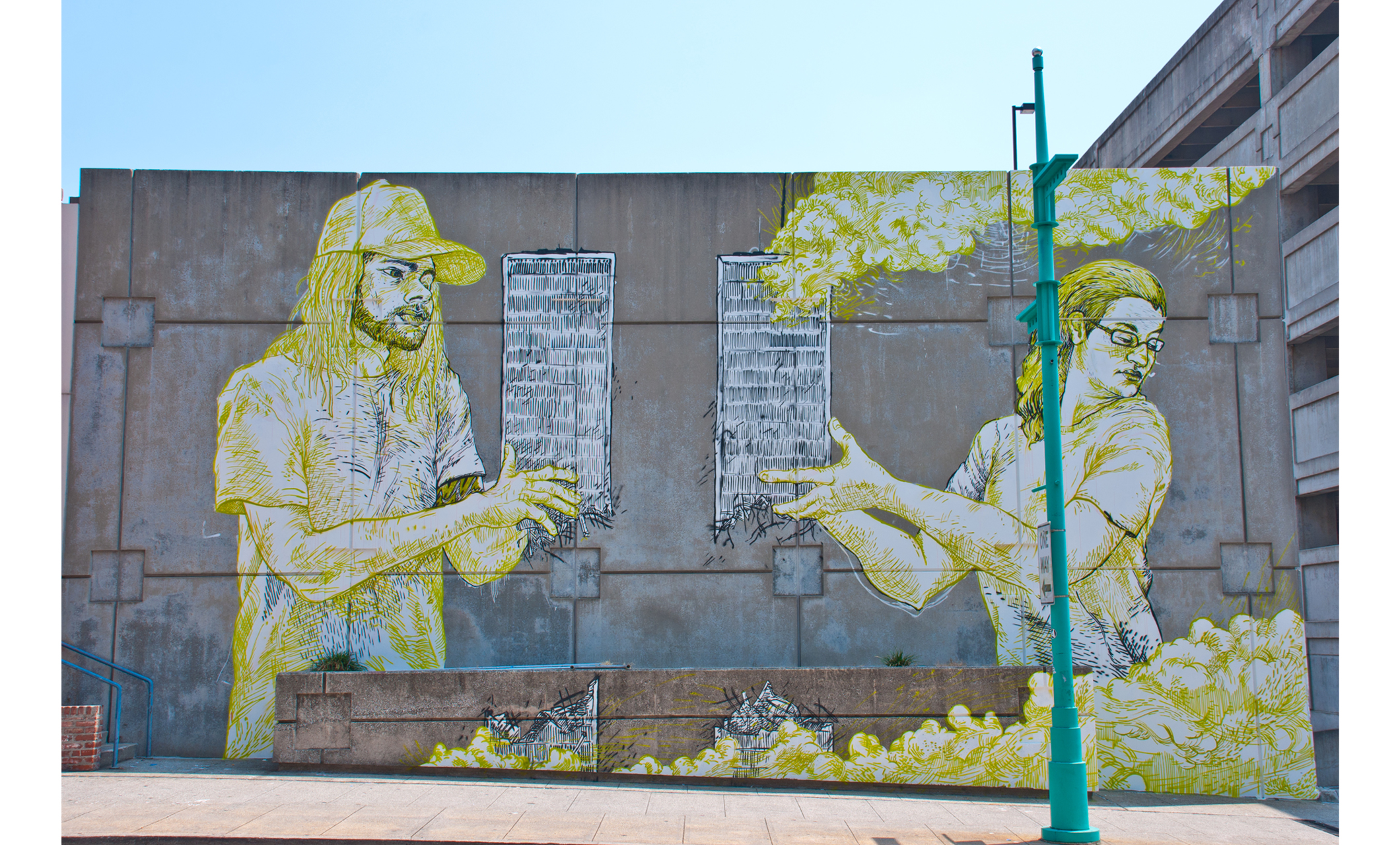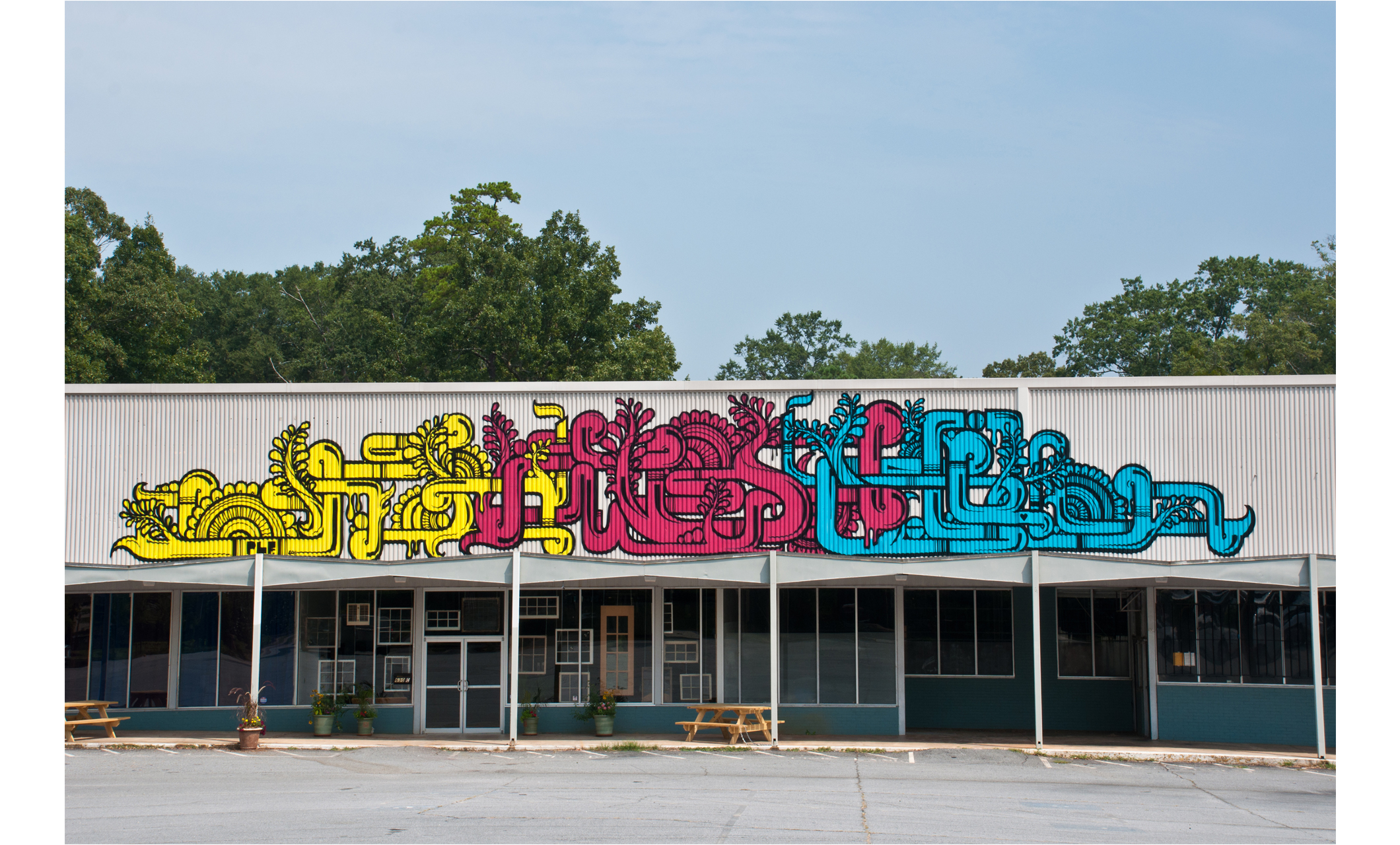Living Walls & #weloveatl Demonstrate Why People Succeed Where Marketing Fails
Story by Chuck Reece
Back in 2005, the City of Atlanta assembled a team of marketing all-stars: borrowed executives from Georgia-Pacific, Coca-Cola and other corporations, as well as hotshot creative types from the city’s most prominent ad agencies.
The team called itself Brand Atlanta and hired Grey Worldwide, one of the world’s largest ad agencies, to “rebrand” the city. Over the next three years, the city spent $8 million marketing Atlanta under the tag line, “Every Day Is an Opening Day.” The rollout of the campaign was accompanied by the recording of a star-studded song, produced by Atlanta’s legendary hip-hop impresario Dallas Austin, called “The ATL.”
Three years later — after abandoning the original tagline and replacing it with the even less inspiring “City Lights. Southern Nights.” — Mayor Shirley Franklin finally pulled the plug on Brand Atlanta, citing the budget squeeze brought on by the Great Recession.
You’d be hard-pressed to find an advertising pro in Atlanta who would argue seriously that the multimillion-dollar campaign actually made Atlantans love their city more or that it made outsiders more likely to come to the city, either as investors or tourists.
The two-and-a-half-minute opening video for the campaign still sits in a lonely corner of YouTube. More than six years after it was posted, it still has less than 8,500 views.
Left to right: Photos by Rebekah Gregg, Joe King, Mary Farmer.
Fast forward to 2012. It’s an afternoon like any other, and Atlanta photographer Tim Moxley is checking out the #atlanta hashtag on Instagram.
“A lot of it was just selfies and other crap,” he recalls, “but I came across a grid of images that seemed like they told a little story about the city. And I thought it would be cool to do a gallery show about Atlanta by people on Instagram and make it a charitable event.”
So Tim went through his Instagram feed and searched for other Atlanta Instagramers and freelance photographers whose work he appreciated. He reached out to two of them, Aaron Coury and Keith Weaver. They met at a coffee shop and hatched an idea. They would begin tagging photographs of the city with #weloveatl, and they encouraged others to do the same. They hoped to print and assemble the photos they gathered into a gallery show whose proceeds would benefit the Atlanta Community Food Bank.
“We expected 30 or 40 pictures,” says Coury, “but within 30 days, we had 5,000 photos.”
With the help of a fourth partner, Brandon Barr, an executive producer at Atlanta video production company School of Humans, they narrowed the vast collection down to 275 photographs, had prints made and partnered with the Youngblood Gallery in Atlanta’s Poncey-Highland neighborhood.
The show’s opening night in December of 2012 drew more than 1,000 people, and it raised $3,271.56 for the Atlanta Community Food Bank. The show also broke down the standard social barriers that keep Atlantans apart.
“The people submitting were not just in-town hipsters. It was everybody,” Moxley says. “Preparing for the first gallery show, we were going through the photographs, and we knew nothing about the people. We were just looking at usernames and email addresses, just trying to get the files so we could get the printing done. But opening night was just amazing. There was a woman who came in with her son and her mother — a middle-aged black lady who lived outside the perimeter somewhere. She came in and had her mom take her photo next to her photo that was on the wall. I went over and talked to them. They were super sweet, and she was super excited about having her photo up in a gallery. I was just totally charged.”
Left to right: #weloveatl's Tim Moxley, Brandon Barr and Aaron Coury. Photos by J.R. Ward II.
By the spring of 2013, the collection had grown to 10,000 photos. “That’s when when we realized it was a grassroots movement that had a life of its own,” Barr says, “and we started wanting to show things in different ways around the city.”
Moxley says one of #weloveatl’s original “mantras” was the idea of “taking the art from the city streets to the city streets.” So they hit upon an idea: What if they had a mobile gallery — “kind of a food truck for photography,” as Moxley puts it?
They found an old bread truck in Macon, Ga., and started a Kickstarter campaign to raise $6,500 to buy it. Within 22 days, the campaign raised $7,536 from 79 backers.
Today, barely two years after it was hatched, the #weloveatl Instagram hashtag sits on more than 50,000 photographs, all taken by Atlantans who try to capture in a single image what they love about their city.
Images from the #weloveatl Instagram community. From top left, images are by Brandon Barr, Kristin Bowen, Benito Ferro, Matt Gannon, Jeremy Davis, Eduardo Castellon, Benito Ferro, David Carlton, Whitney Ott and Scott Shire.
Online engagement is a huge measure of any brand’s success these days, so let’s look at how much engagement Brand Atlanta’s $8 million bought. On YouTube, as of early this week, the “Every Day Is an Opening Day” video had been viewed 8,429 times. Austin’s “The ATL” song had been viewed on YouTube 7,329 times. That’s a grand total of 15,758 views. Divide the $8 million the city spent by that number, and you’ve got a little more than $507 for a single view.
Granted, Brand Atlanta’s campaign crossed a variety of media, and social sites did not play the huge role they play today. But still, the return on investment seems ridiculously small. Consider this: The highest ad rates on network television are, of course, for the Super Bowl, in which advertisers in 2014 paid $4 million for a 30-second spot. The game drew a television audience of 111.5 million people this year, which works out to roughly four cents per viewer.
But four guys with a good idea and Instagram accounts have assembled more than 50,000 little photographic love letters to Atlanta — at no cost but their time and that bread truck. Although the #weloveatl team has no way to calculate how many times those 50,000 photos have been seen on the Internet, it stands to reason that the number climbs into the hundreds of thousands. And then there’s the bonus: Through more than a dozen shows in galleries and on the truck, #weloveatl has raised enough money for the Atlanta Community Food Bank to supply more than 26,000 meals to the city’s needy.
So if you were an advertiser with millions of dollars to spend, whom would you rather hire: Tim, Keith, Aaron & Brandon or Grey Worldwide?
Tim Moxley adjusting one of the images in the #weloveatl mobile gallery during an Atlanta Streets Alive event. Each print sold creates 200 meals for those in need. Photo by J.R. Ward II.
Of course, no one — especially Tim, Keith, Aaron and Brandon — believes their work can replace the efforts of a big ad agency with big money. That wasn’t their intent, anyway.
“It’s not part of our agenda, per se, to market the city,” Barr says. “Our agenda is to pull together really talented people and let them tell their stories and then reflect their stories back onto the community. What’s been so amazing is how much I’ve been surprised by the talent that appears every time we give up the reins and try to just empower the community.”
And as the #weloveatl community has grown, its members find themselves relating to their city in new ways, seeking out neighborhoods they’ve seen only in the #weloveatl Instagram feed, spending more time walking around the city in the hope of capturing a new image.
“You start to take MARTA because you want to take photos,” Barr says. “You start to walk that extra block to lunch so you can take photos. I’m starting to see an urbanist thing happening because of mobile photography.”
We challenged Tim Moxley, Aaron Coury and Brandon Barr to choose their single favorite photograph from all 50,000 in the #weloveatl Instagram feed.
Tim Moxley
"This one came early on. For me this was the first time where I felt someone was submitting an actually real, personal moment. This is Yancy with his wife on their wedding night. To me it speaks of Atlanta now, the citizens of today where life and love happen without any thought or consideration for the ghosts of the past."
Aaron Coury
"This shot by Wes Quarles (@wesq) is from the first show we did and this gentleman's image has been stuck in my head ever since. I love that this stranger's personality almost pops out of this photo in a way that makes you feel like you know him. I also love the contrast as it creates a moody atmosphere."
Brandon Barr
"My favorite shot from the collection so far is this candid street photo from Jason Travis taken just outside Grant Park during a rainstorm. The texture of the rain, the gesture of their limbs as they squeeze under a Georgia peach box, together in this moment — it tells an amazing story of a fleeting moment."
The point here is not to dismiss all taxpayer-funded marketing efforts as useless. That’s far too broad a claim to make. But it has become clear that we live in an age where the people of a city can shape how the world sees their hometown with greater impact and clarity than a high-dollar marketing campaign ever could.
This cannot be done, however, with legions of Instagram users alone. The #weloveatl gang’s method is to document the things we love about Atlanta. They are observers. But changing how a city loves itself also requires participants — people who are willing to confront old norms and provoke some change.
People like Monica Campana, for instance.
Top: Monica Campana standing in front of the Boulevard Tunnel project. Photo by J.R. Ward II. Bottom left to right: New York artist MOMO at work on the Boulevard Tunnel project. Campana taking a photo of the wall painting in action. Sparkling Sun is an apt description not just for the paint color but also for the general feeling you get when discovering one of Living Walls' projects. Bottom row photos by Kristin Bowen.
A native of Lima, Peru, who spent her teen years in Orlando, Campana came to Georgia seven years ago on a scholarship to study art at the Savannah College of Art and Design’s Atlanta campus.
In 2010, the Congress for New Urbanism convened its annual conference in Atlanta. The CNU calls itself “the leading organization promoting walkable, mixed-use neighborhood development, sustainable communities and healthier living conditions.” Campana found those issues very important — particularly the role that public art plays in making cities better places in which to live. But Campana was upset that the dialogue going on at the CNU was open only to those who could afford several hundred dollars for the registration. So she invited 20 street artists to Atlanta for a weekend. They painted 12 murals around the city’s center. Without asking anyone’s permission.
That was how Campana cemented her reputation in the Atlanta art world as a provocateur, and it represented the birth of an Atlanta-based non-profit called Living Walls, which has already become a model for similar projects around the world. Living Walls brings prominent street artists to Atlanta to paint huge murals on building walls all over Atlanta.
Scroll left or right. Living Walls gallery photos by John McNicholas.
“When we started Living Walls, we wanted to use art as a way to create attention,” Campana says. “We wanted to work with street artists. We also wanted to put the artists together with people who were doing other urban initiatives. We wanted to make that dialogue free and open to the public.”
Over the life of the project, almost 100 artists from all over the world have participated. Along Edgewood Avenue alone, from the heart of downtown Atlanta through the Old Fourth Ward neighborhood on the city’s east side, there are more than a dozen Living Walls projects, painted by artists not only from Atlanta, but also from California, France, Peru, Mexico, Italy, Israel and Argentina.
“From a global perspective, there is a change happening,” Campana says. “Young people, young professionals, young urbanists are really caring more about living in better cities. Places where you can walk and feel safe doing that. Going to a farmers’ market vs. going to a regular grocery story. Supporting local businesses. I think, in the past five years, this is something that’s been booming. Creative folks also want to be a part of that, and public art is a great way to put ideas in your face.”
Even the experts, folks who can afford the registration fee for CNU, agree. “The bones of good urbanism are just that — bones. But public art? That’s the outward projection of who we are,” says Scott Doyon of the urban design and community development firm, PlaceMakers, which has an office in Atlanta. “It’s what gives life and personality to the building or the street or the public square. It’s that perfect shade of lipstick — a little flirty, maybe a little bit dangerous — or the ridiculous jacket worn solely to confound. Or maybe it’s the black dress of mourning, professing some sorrow or burden better carried on the shoulders of the broader community.”
Living Walls — whose dozens of projects have challenged Atlantans in exactly the way Doyon describes — appears to have turned Atlanta into the epicenter of a global discussion about the value and purpose of public art. In Living Walls’ wake, similar projects have arisen in several American cities, as well as in Peru and South Africa.
Doubtless, they will all from time to time create controversy, just as Living Walls did in late 2012, when images of a serpent in a work called “An Allegory of the Human City” by French artist Pierre Roti drew the ire of some church-goers in south Atlanta’s downtrodden Pittsburgh neighborhood. But even though the controversy ended with “An Allegory” being painted over, it started a dialogue.
Pittsburgh community leader and former state Rep. Douglas Dean, who was among those who worked for the removal of “An Allegory,” later invited the art community to visit Pittsburgh and talk about a new mural. “We need a healing on both sides,” Dean told the Atlanta Journal-Constitution.
This mural by the artist Huyro was a Living Walls project caused a bit of controversy. Photo by John McNicholas.
As Living Walls has grown, so has its ability to work more straightforwardly with city government. Even though the Pittsburgh controversy resulted in the introduction of an ordinance that would subject street art to greater government scrutiny, Living Walls clearly has its supporters on the Atlanta City Council.
"Living Walls has been a great public art partner in the intown Atlanta neighborhoods that I represent,” says Atlanta City Councilman Kwanza Hall, whose district has one of the highest concentrations of Living Walls projects. “The quality of the work has been consistently high. I am proud of the relationship that I have with Living Walls, and the way that we work collaboratively to identify walls that meet the artistic visions of their muralists. Over the years, I have especially enjoyed introducing longtime property owners to the ways murals can enhance the experience of their property, making it a destination all its own."
Such talk from a politician might not appeal to Campana's image of herself as a provocateur, but it demonstrates clearly that she and her organization have accomplished exactly what their mission statement says: “to … change perspectives about public space in our communities via street art.”
Cover photo by John McNicholas. Video by Living Walls.
Last weekend, Living Walls and #weloveatl worked together for the first time when Living Walls brought the internationally renowned street artist MOMO to Atlanta to start a two-week project to fill the Boulevard Tunnel with a new mural. As Monica Campana and the Living Walls team gathered with MOMO to begin painting the tunnel, #weloveatl’s Moxley, Barr and Coury led gangs of Instagramers around both neighborhoods to shoot photos of various Living Walls works — and whatever else they saw that made them love Atlanta.
Brandon Barr briefs the group on Carroll Street in Cabbagetown before heading out on the tour of neighborhood Living Walls projects. Photo by J.R. Ward II.
The Boulevard Tunnel connects two of Atlanta’s burgeoning intown neighborhoods — the Old Fourth Ward and Cabbagetown. The two neighborhoods abut, but they are divided by a railroad gulch that carries freight and MARTA trains alike.
You can move from O4W to Cabbagetown only through the Boulevard Tunnel. But historically, the tunnel hasn’t been a particularly welcoming sight. To even the savviest Atlanta dweller, walking through the tunnel from a bar on Edgewood in the Old Fourth Ward to a café on Carroll Street in Cabbagetown would seem more than a little foreboding.
The artist MOMO in the Boulevard Tunnel. Photos by J.R. Ward II.
But moving through the tunnel over the weekend, watching it begin to fill with the rainbow hues that will form the background of MOMO’s mural, the Boulevard Tunnel was beginning to look like some kind of magical, storybook passageway. It was no longer just a hole through a railroad gulch, a place to hurry through on the way to somewhere else. That old tunnel was becoming, all by itself, worthy of a nice, slow stroll.
All around it, young people with hope in their faces seemed completely in love with the old city around them. They snapped pictures by the dozens and tagged them #weloveatl.
Clearly, they do.
Photos by Kristin Bowen.
Header photo by Patrick Michael Chin. The caption attached to Patrick's Instagram is ... well ... just about perfect: “In true Atlanta fashion we stumbled upon a hip-hop video being filmed yesterday. There were video girls, motorcycles, Mercedes coupes, and of course, the talent. I've always wanted to see the Jackson Street Bridge and it just so happened that when we pulled up yesterday this was going down. They were so welcoming of us though and we ended up hanging out with them for close to two hours. It was probably the most Atlanta thing I could have ever hoped for.” #weloveatl

































